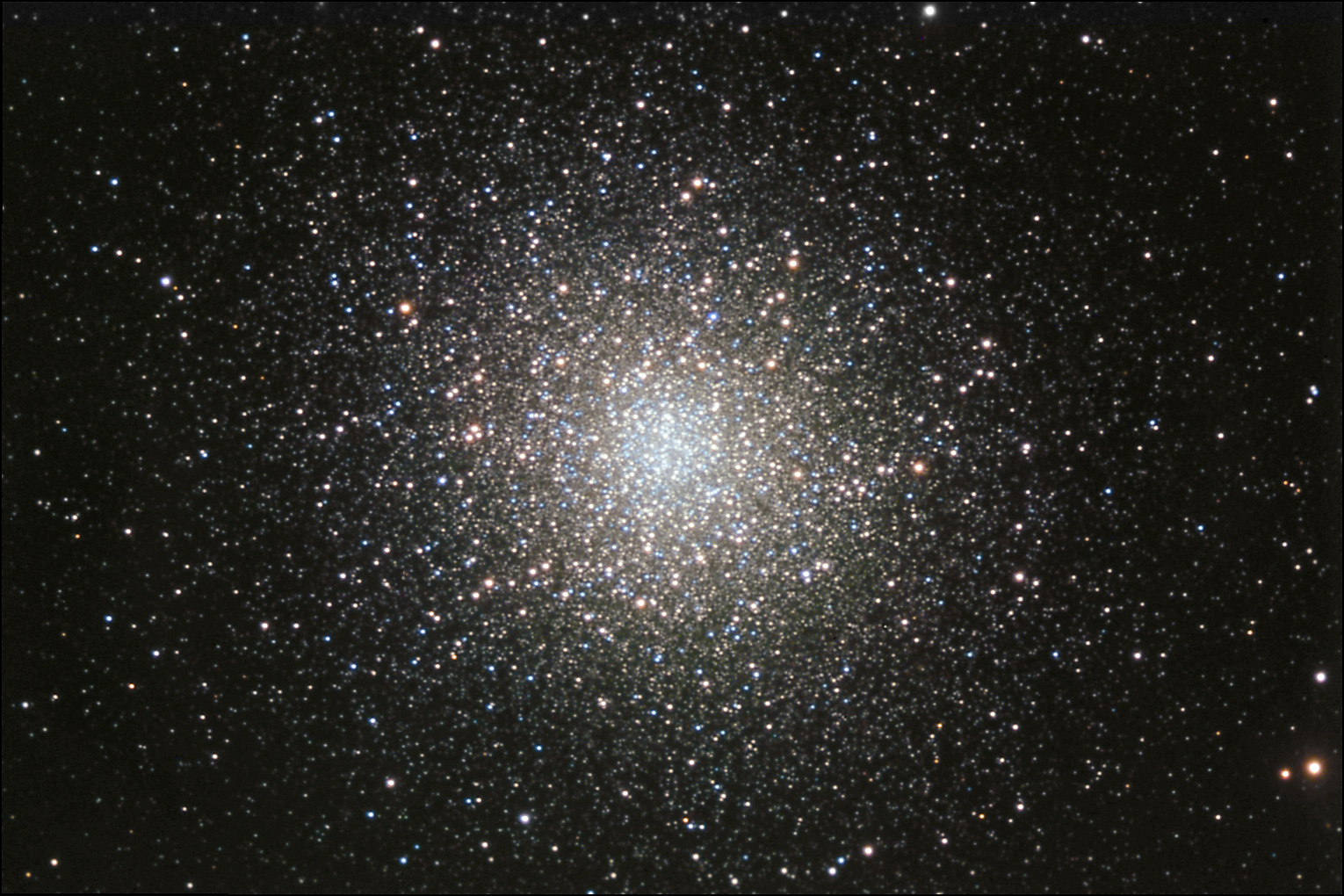

M13: M13, the Great Hercules Cluster, is probably the most prominent globular cluster visible from the northern hemisphere, overall about magnitude 5.9 and hence visible with binoculars. This was the first deep sky object I found star hopping with my first "real" telescope. Estimates of the number of stars in M13 vary from 100,000 to over a million, in a diameter of about 150 light years across, and is about 20,000 light years from Earth. Globular clusters are among the oldest objects in the galaxy; M13 is over 12 billion years old.
Copyright 2006 Mark de Regt